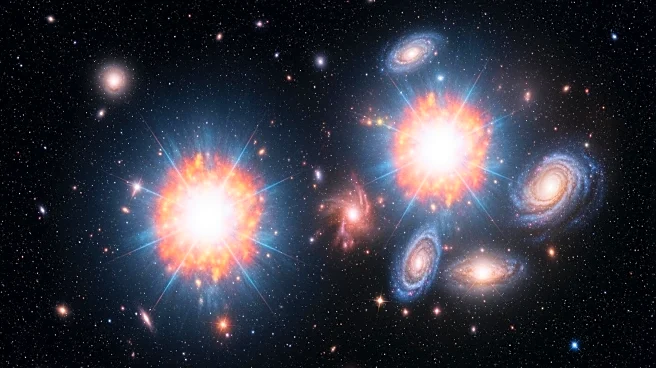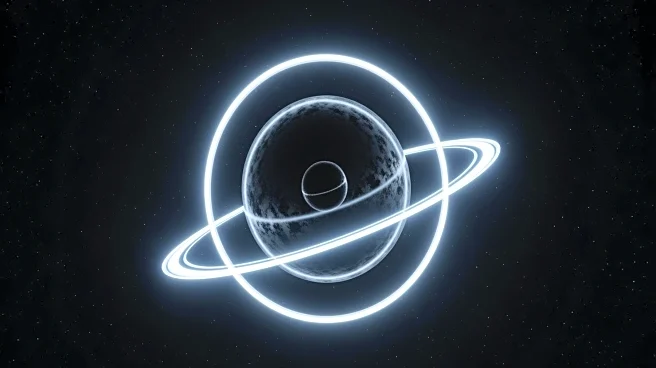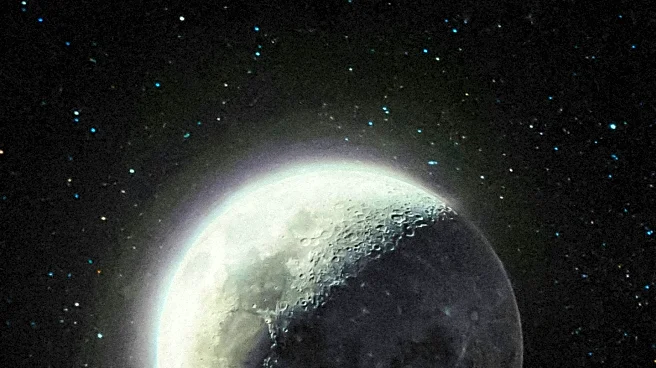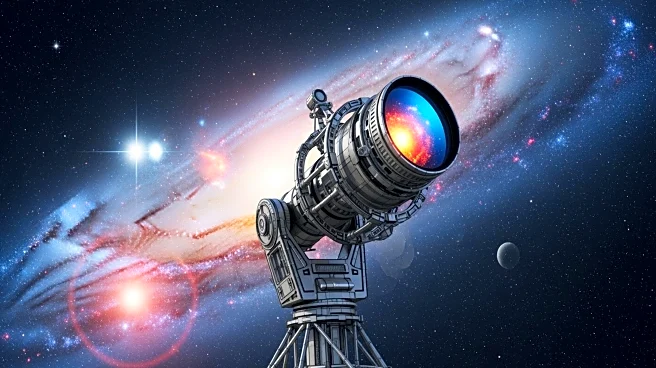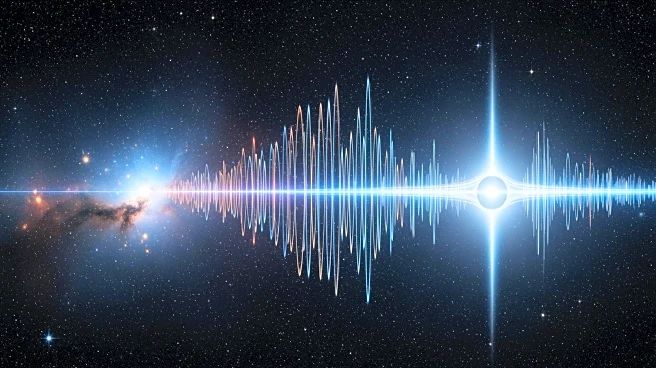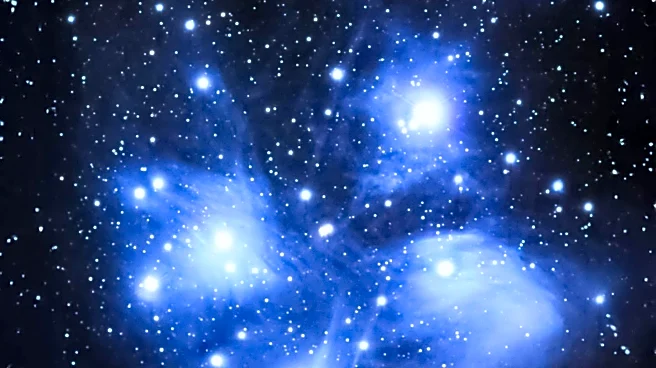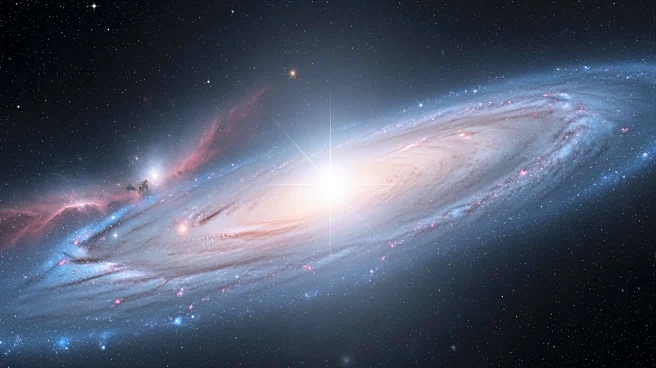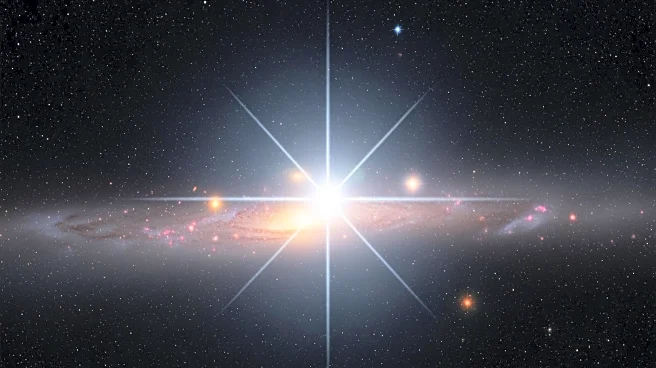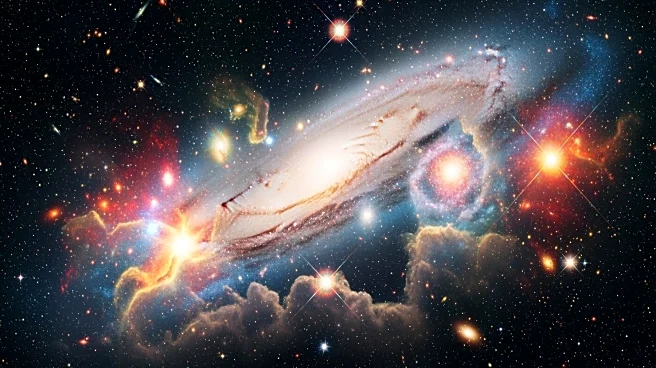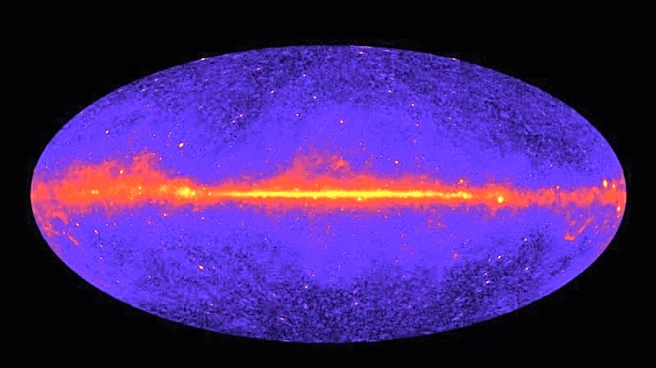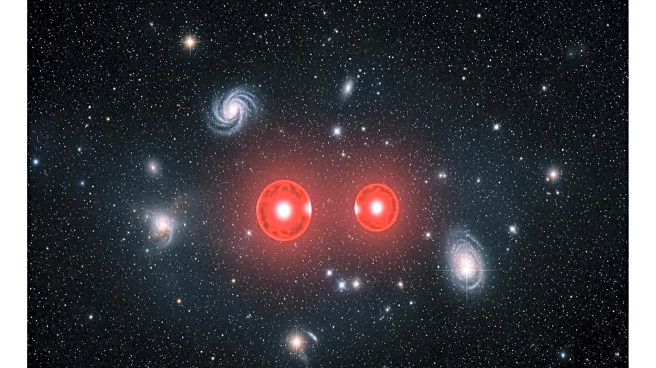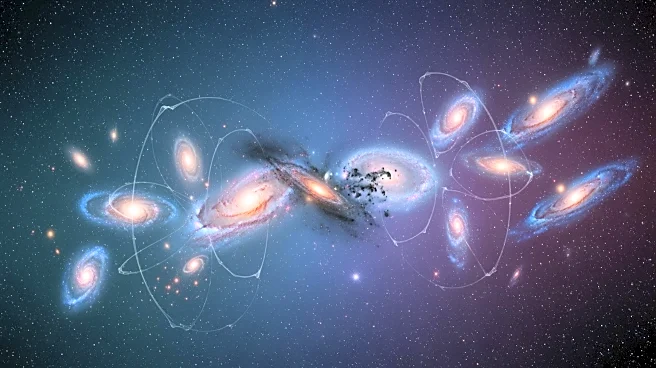What's Happening?
Astronomers have captured the first image of a star that exploded twice, providing new insights into the mechanisms behind Type Ia supernovae. The star, located in the Large Magellanic Cloud, left behind a remnant known as SNR 0509-67.5, which displays
two distinct layers of debris. This pattern is consistent with a double detonation model, where an initial explosion in a helium layer triggers a second explosion in the star's carbon-oxygen core. The study, published in Nature Astronomy, highlights the presence of two calcium-rich shells with a sulfur layer in between, supporting the theory of a two-stage explosion. This discovery is significant as Type Ia supernovae are used as cosmic distance markers, and understanding their trigger mechanisms is crucial for accurate distance measurements across the universe.
Why It's Important?
The findings from the study of SNR 0509 have significant implications for astronomy, particularly in the field of cosmology. Type Ia supernovae are critical for measuring cosmic distances due to their predictable brightness. However, the discovery that these supernovae can result from multiple detonation paths suggests that their brightness and color may vary more than previously thought. This could impact the calibration of cosmic distance measurements, which are essential for understanding the universe's expansion. The study provides direct evidence that some Type Ia supernovae can explode before reaching the Chandrasekhar mass limit, indicating a need to refine models that predict these explosions. This research enhances the understanding of the chemical composition and expansion of the universe, offering a more nuanced view of stellar evolution and supernova mechanisms.
What's Next?
Future research will focus on identifying similar calcium-sulfur patterns in other supernova remnants to determine the prevalence of the double detonation mechanism. Expanding the sample size will help assess how common this explosion path is and its impact on the diversity of supernova brightness. Additionally, advancements in three-dimensional radiative transfer models will aim to connect ejecta maps to observed colors, improving the standardization of distance measurements. As these methods converge, the reliability of the cosmic distance ladder will be strengthened, allowing for more precise cosmological studies. Continued observations and model refinements will further elucidate the complex processes behind Type Ia supernovae, contributing to a deeper understanding of the universe's structure and history.
